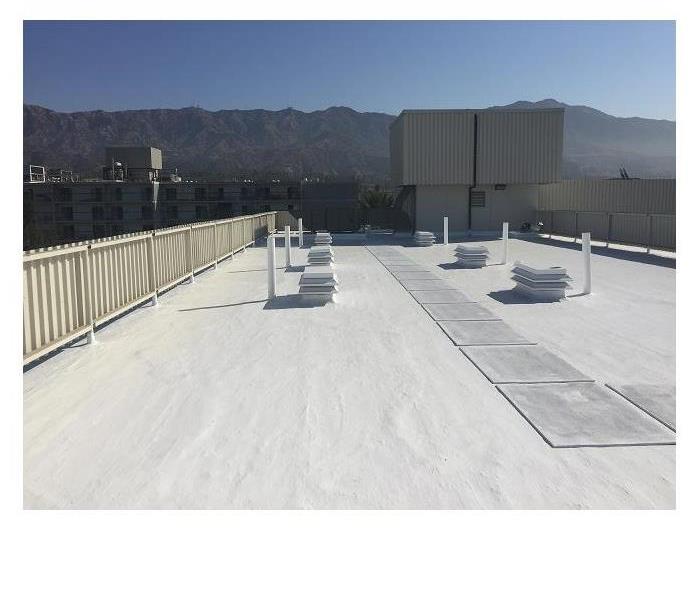Winter Weather Tips for Commercial Buildings
2/20/2019 (Permalink)
While most facility-related precautions should be taken prior to the onset of winter weather, actions can be taken during the weather-related events to minimize the severity of damage resulting from severe winter weather conditions.
Prior to the onset of a specific winter event, clear communications should be provided to all site personnel regarding intended functioning of the facility during the anticipated event, including emergency contact information. Alert security and critical maintenance/facilities’ personnel of potential need for standby or emergency operations. Review response protocols with all personnel who may remain on site.
- Equipment Winterization: Double-check that all water-filled systems are fully drained and locked-out. Don’t forget to service all low point drains on dry pipe/preaction/deluge sprinkler systems. Re-check valve pits and identification for roadway valves.
- Adequate Heat: Ensure heating equipment is operational (if not already in use). Stage temporary, portable heating equipment as provided in usage protocols, including making sure the equipment is protected against impact and is well separated from combustibles. Project areas that involve openings in the building envelope should be temporarily sealed to prevent intrusion of precipitation, and the sealing should be capable of withstanding high winds. Temporary heat should be provided as appropriate.
- Structures & Services: Review anchorage of roof-mounted and outdoor equipment. Clear snow accumulations from roof areas where elevation changes suddenly and ensure all roof drains are clear and double-check condition of roof access means and fall restraints for snow-clearing activities. Make sure equipment needed for snow-clearing tasks is available; top-off generator fuel tanks and review refueling provisions. Review power outage protocols with appropriate personnel and ensure an adequate supply of emergency equipment is on hand, including materials sealed for building openings/broken windows, emergency lighting/flashlights, cold weather protective clothing, etc.
Activities During the Storm
The safety of facility personnel is paramount during a winter weather event. However, if the situation allows, there are actions that can be taken during a storm to lessen the chances of damage to a facility due to extreme winter weather.
- Adequate Heat: Security and/or maintenance personnel should tour all areas of the site during the event to ensure that adequate heat is provided (> 40°F / 4°C) where needed. Action to provide supplemental heat or isolate equipment should be taken as necessary. Fire protection system dry pipe system riser rooms should be checked at least once per shift (more often if problems have been experienced) to ensure they are heated and have not tripped.
- Structures & Services: Security and/or maintenance personnel should tour all project areas and building exterior (if safe to do so) to monitor for failures of the building envelope and initiate appropriate, safe action to minimize damaging effects. When practical and safe, drifting snow should be removed from roofs during heavy snow storms.

 24/7 Emergency Service
24/7 Emergency Service
